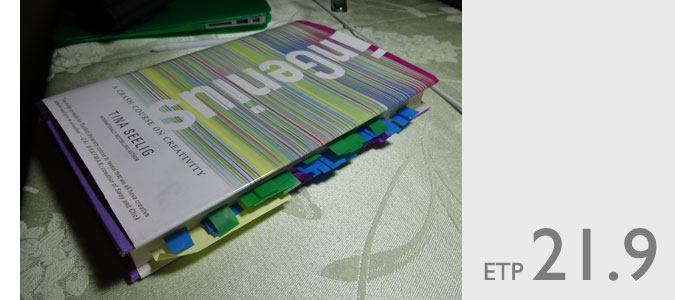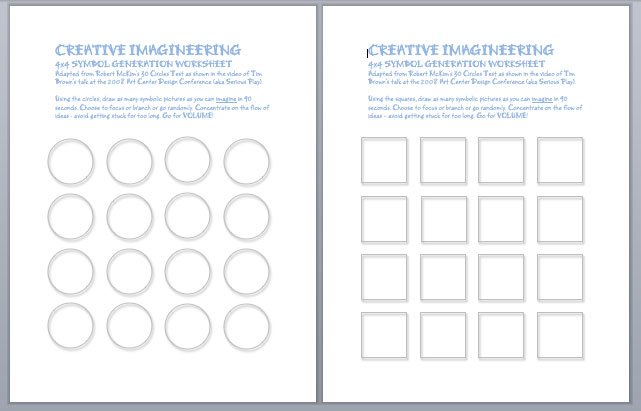Book: inGenius by Tina Seelig
Thursday, February 28th, 2013Just recently finished reading the book “inGenius” by Tina Seelig. As a follow-up to the author’s previous book “What I Wish I Knew When I Was 20,” this book had contrasting style and voice. inGenius read like a journalistic article (although I know a lot of the content came from personal experience) and felt like a report in narrative rather than the inspirational feel of the earlier book. Actually, the titles of the book suggested as much to me before I started reading the second book. Nonetheless, it was a good read and several useful lessons were found that I have already used in the YCISL.
(1) One of the skills that one has an opportunity to and should develop at a young age is to ask questions. Partly to balance the thinking that goes on in a “give me the answer” school environment but also to be able to frame problems. On page 19, the author relates how two seemingly identical question can lead to very different thinking and answers. If one can conjure up questions like a chess player rapidly conjures up possible chess moves, reframing problems will be a valuable skill and asset.
(2) One exercise that I have already carried out with several groups (even one group of school headmasters and district directors) is the birthday line up exercise described on page 49. I’ve run this with middle school students and high school students as well. It works great as an icebreaker and an example of teamwork. As a kickoff to a workshop, it also helps set ground rules such as “It’s ok to ask questions” and “You only have the instructions I gave you already – nothing else. So listen carefully.”
(3) On page 129, the author writes “Many rules are designed with the goal of improving performance, but they actually do the opposite.” While many of us can probably tell of an instance where this has happened (even at Stanford!), I don’t think a disregard for rules is called for – even when creativity is desired. I consider myself a rules-based thinker and this has served me well. From being a computer and IT expert to a sports player and coach, I know that rules are the means to advance. As an extreme example to balance the initial premise, one could say that “creativity is like daydreaming which is idling.” In my view, creativity needs to be applied to the rules of innovation (the game – reminds me to recommend checking out the book “GameStorming”) in order to accomplish things – decision making, leadership, productivity, and others. Perhaps it is poorly designed rules that are the problem, not simply having rules. Try setting up email filters in your email client to sort and filter, and you might have a good idea of how to set up effective rule sets.
(4) I appreciated the reference to Tom Wujec’s “Marshmallow Challenge” on page 144 as one of my mentors who had done this exercise in Seelig’s class brought it into a YCISL workshop in 2012. I’ve run this exercise three more times – with my middle school students as well as another group of high school students – and have made modifications to the exercise. Perhaps I was buying weak spaghetti but the marshmallow was a massive downer – except when the students wanted to eat them up (better than them eating the uncooked spaghetti!). So, I have modified the exercise such that each team gets a mailing label and has to design a flag on it to attach to their structure – and the height of the tower is measured by the distance between the surface and this flag. The flag lends an opportunity to personalize the tower and represents the focal point of their effort. Of course, the lightweight nature of the label compared to the marshmallow avoided the potential tipping disaster. In my YCISL exercises, I prefer to set the success to failure probability about 2:1 in favor of success. I found that the marshmallow (at least in a timed situation) put failure in 2:1 favor. Another modification that I tested a few times was to make the objective to build a tower that touches the ceiling of the room. I was looking for a change in teamwork dynamics and spatial design. More on that in another entry at another time.



